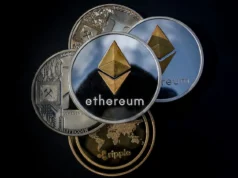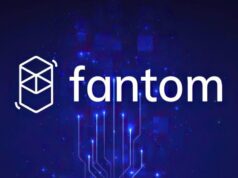
Are you worried about the future of crypto auto-staking after the recent SEC settlements? Find out what changes we could expect in this sector and why it is an important topic.
With recent events, the future of auto-staking has become uncertain. You need to understand the potential impacts on yourself and your investments. Uncover everything you need to know with this deep dive into the future of auto-staking post-SEC settlements.
What is Auto Staking?

It is an innovative technology that has been gaining traction in the cryptocurrency space. By enabling investors to allocate a percentage of their portfolio into an automatically managed fund, they can enjoy cost-efficient and secure investment strategies without tedious manual intervention. The rewards associated with it vary depending on the type of cryptocurrency asset being invested in, but overall, it provides users with greater flexibility and returns from their investments than traditional trading methods. One example of an emerging platform introducing this concept is Vulcan Blockchain, which provides customers with a secure and efficient way to stake cryptocurrencies.
The concept is especially attractive for all types of investors as it can help reduce risks associated with manual trading and simplify portfolio management. Moreover, auto staking has proven to be even more advantageous when it comes to mitigating transaction costs as well as enabling users with flexible and efficient ways to access returns from their investments over time.
SEC Settlements and Their Impact on Auto Staking
The recent Securities and Exchange Commission (SEC) settlements with numerous firms related to auto-staking operations have recently sparked a great deal of interest in the cryptocurrency industry. The SEC issued cease and desist orders to five firms that hadn’t registered with the regulator and failed to adhere to the security requirements mandated in the securities laws. The settlements also revealed that automated services can be classified as securities, but there are a few important exceptions to this rule.
In light of the new regulatory developments, many cryptocurrency exchanges have since adopted new policies for auto-staking operations. Automated services run on custodial or centralized exchanges must offer equivalent protection for users as required by securities regulations in order for them to operate legally. Further, such services must offer complete transparency – from fee structures to risk disclosure policies – so customers make informed decisions prior to engaging in auto-staking activities.
Operators now face a considerable number of regulatory hurdles, which translate into greater start-up costs and potential productivity losses due to compliance procedures. Despite these challenges, auto-staking service providers are adapting quickly to meet market demands for securely trading digital assets through automated staking protocols.
By staying informed about recent regulatory developments regarding automated staking services, crypto users can explore more secure opportunities while minimizing their risk exposure as they seek higher rewards in auto-staking activities.
What are the benefits?

Here are some of the key benefits of using auto-staking:
1. Hands-Free Management: With auto staking, you can set up your investments once and forget about them – allowing you to focus on other endeavors.
2. Cost Savings: Since there’s no need for manual labor, you save on costs associated with manual management and transfers.
3. Increased Security: It offers an additional layer of security since it eliminates risks associated with manual input and keeps your funds secure.
4. Higher Returns: By automating the process, investors can easily multiply their returns due to compounding interest over time.
5. Diversified Portfolio: Because auto staking allows for investment in multiple types of assets, investors can diversify their portfolios and hedge against potential losses.
Potential Challenges
The potential of auto staking to expand cryptocurrency investing, drive market adoption and stimulate the development of new products has never been greater. However, with progress in this area comes the need for further regulatory clarity and the potential for new challenges.
Though auto staking is likely to be less regulated than traditional investing, investments made via auto staking can still present issues as it relates to GDPR/CCPA privacy laws due to the inherent trust these services require when a user links their investment wallets with an auto-staking platform. Additionally, with increasing competition in the space, it is reasonable to assume that issues such as data security should be top of mind.
Though many of the issues surrounding data security have had reasonable solutions presented in recent initiatives like KYT (Know Your Transactions) which helps safety protocols maintain reasonable levels of risk mitigation there are still many unknowns related to what regulatory forces will be present in a post-SEC settlement future. For example, will we see increased taxation associated with any particular kind of investment? And if so what kind?
In short, while there are exciting possibilities surrounding the growth and application of auto-staking technology there is a need for more clarity on regulatory forces before this industry can reach its true potential.
Future Outlook

Since early 2020, the U.S. Securities and Exchange Commission (SEC) has been closely monitoring auto-staking platforms as part of a settlement triggered by violations of its rules and regulations. The SEC’s goal is to protect both investors and issuers, who are getting increasingly interested in deploying such products as a means to access liquidity without needing to liquidate assets held in their portfolios.
Although the SEC will likely set some guidelines concerning the use of auto-staking models, it is expected that this process will take several months or even years before they come into effect. As a result, it is important to understand how these changes could affect the future growth and development of these technologies.
In conclusion, auto-staking services are on the rise and the SEC’s recent settlements with token issuers and services indicate that they will continue to become an increasingly important part of post-ICO investment strategies. Projects which offer auto staking can provide greater value to investors in terms of their potential returns, as well as a less operational risk due to the reduced need for constant monitoring and security considerations.
For these reasons, it is likely that auto-staking options will become more widespread in the future – especially when combined with pre-defined conditions which can be implemented using smart contract technology.









